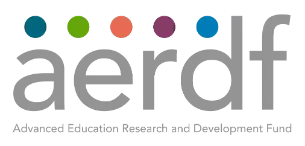The majority of American middle and high school students aren’t reading at grade level.
Only about one third of U.S. students read at grade level, according to data from the 2022 NAEP Reading Assessment. The likelihood of reading proficiently is even lower for students of color or those experiencing poverty.
While these trends aren’t new, there’s growing awareness among teachers, administrators, and literacy specialists that it’s time to face this problem head on with innovative, effective solutions—both for students’ proficiency in their classrooms and to establish pathways for their future success.
Recently, the Achievement Network (ANet), Reading Reimagined, an Inclusive R&D program with AERDF, and ROAR (The Rapid Online Assessment of Reading), a pilot program from Stanford University, joined forces to host a webinar about their partnership in addressing what’s working and what’s not in U.S. reading education, particularly for students in middle and high school.
Mary Schreuder, ANet’s director of secondary literacy, moderated the hour-long conversation featuring insights from five panelists:
- Rebecca Sutherland, associate director of research, AERDF Reading Reimagined
- Carrie Townley-Flores, director of research and partnerships, Stanford ROAR
- Xia Gauthier, partnership manager, ANet
- Colleen Kelly, director of school support, ANet
- Stephanie Sluyter Charbonnet, director of school support, ANet
Drawing on their experiences as classroom teachers and curriculum support specialists—along with findings from ongoing ANET, Reading Reimagined, and ROAR literacy pilot programming—each participant shared realistic targets that could help improve reading education for students in grades 4 through 12.
Interventions to improve reading education are, of course, complex, requiring long-term development and strategic integration and testing. As a means of introducing this work, the team discussed several baseline strategies that should inform schools’ intervention approaches.
____________________
- Foundational reading education should extend beyond primary classrooms
Most students in grades K-3 receive active support with beginning reading skills, including phonics instruction. By grade 4, the expectation is that students know how to read—and lessons shift to demand using literacy skills to read to learn in their various subjects, whether math, social studies, language arts, or science.
Evidence from NAEP and other literacy assessments suggest this approach may not be working. Many students are leaving primary grades without mastery of foundational literacy skills needed to decode and comprehend complex words and sentences.
“Basic phonics instructions only takes students so far,” said Sutherland. “They need ongoing, explicit support to be able to engage with texts that involve more technical terms. But schools are not currently set up to provide that support to students.”
- Schools need data to accurately measure students’ foundational reading gaps
Most schools rely on annual summative achievement tests to measure older students’ reading comprehension skills. Tests of foundational skills, such as phonological awareness, are typically only used in early elementary grades.
Yet having access to this data for older students is critical if schools hope to understand the scope and root causes of their students’ grade-level reading difficulties. These insights can also be used to identify individual students in need of targeted reading support—and to establish whether small-group or whole-classroom interventions would be most effective.
Without data, “teachers in upper grades in elementary and middle school don’t have any insight into where their students’ learning needs lie when it comes to foundational skills,” Sutherland explained.
This is where innovative assessments such as ROAR come in. The 10-minute test, now in pilot stage, allows teachers to quickly and effectively assess their students’ reading decoding skills.
“When we talk with school leaders, we ask, ‘How big is the [reading skills] problem in your school?’ And nobody knows, because these assessments don’t exist yet,” said Townley-Flores. “With ROAR, we’re trying to fill that gap. It’s an open-access assessment that is automated and easily accessible to all schools.”
- Teachers require support to reframe their reading education strategies
To get more students to grade-level reading proficiency, schools need to revisit the way reading is being taught, panelists advised.
“We need to go beyond comprehension and go back to those basic foundational reading skills and change how we’re teaching those,” Townley-Flores said.
“Making sure that everyone can actually decode is a necessary first step,” Sutherland agreed. “There is a lot of work to be done there.”
“There are also opportunities to introduce fluency routines into whole group instruction,” Charbonnet added.
Yet implementing these pedagogy shifts will require concerted time and effort. Teachers will need support to learn new reading and fluency instruction techniques before sharing them with their students.
Many teachers “have not had training on what foundational skills look and sound like in middle and high school,” said Kelly. “We have to be sure that we are building in the time, structure, and space for them to be able to learn [new teaching strategies]. They need to be excited and see the ‘why’ behind all of it.”
- Older students deserve opportunities to co-direct their learning
Many foundational literacy intervention materials are geared toward very young readers. Schools should search for curricula that better fit middle and high schoolers’ needs and interests when developing new reading support programs for these students.
Additionally, teachers and administrators should recognize that traditional patterns of “pulling” students from class for supplementary support could affect older students’ self-esteem.
Schools should build learning models that “take into consideration a student’s own self-efficacy and confidence around foundational skills,” Gauthier said. “A challenge is finding an approach that honors students’ social and emotional skills while also addressing the opportunity to significantly improve their foundational [reading] skills.”
“When you set up these structures, it’s really important to consider the dignity piece of this, especially for older kids,” Kelly agreed. “Co-construct [intervention plans] with the students. Ask, ‘Do you want to be pulled out in this period, or come before or after school?’ There are lots of ways to [offer supports], including having every single student in school have an intervention class, since we’re all in progress and learning.”
Finally, teachers should work to help older students find the joy and value in reading—and to reaffirm their identity as “readers.”
“Instruction for older struggling readers has to include building up a ‘reader’s identity,’ building value around the purpose of reading, and then fostering their interest in reading,” Kelly said. “There needs to be a shift that allows struggling readers to build up their belief in themselves in order to get the support they need.”
____________________
Throughout the discussion, panelists shared that teachers and administrators are eager to integrate effective literacy education for older students, but figuring out how to get started can be challenging.
Teachers “understand what’s at stake for students, especially in high school, if they graduate not being able to read,” said Charbonnet. “There is a real sense of urgency around this topic, but there are so many competing priorities in schools—and finding time to respond to this need can be difficult.”
Given these challenges, schools working with ANet, ROAR, and Reading Reimagined pilot programming have focused on finding first-step initiatives that are both “feasible and impactful,” Charbonnet said.
“We’re hoping the data that comes out of [pilot programs] helps build momentum,” she added. “So that we can say, ‘Here’s what we did. And it truly supported and helped students grow.’”



